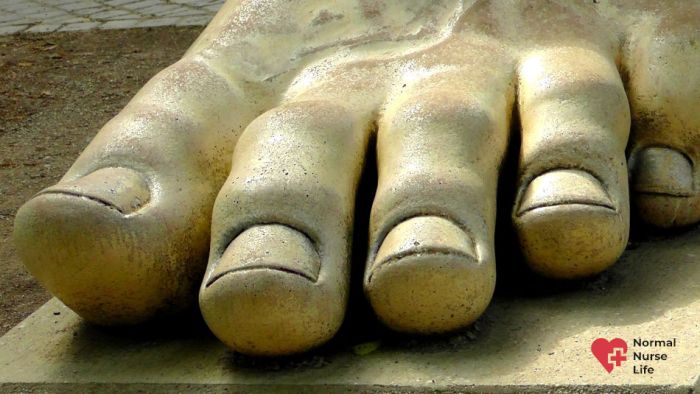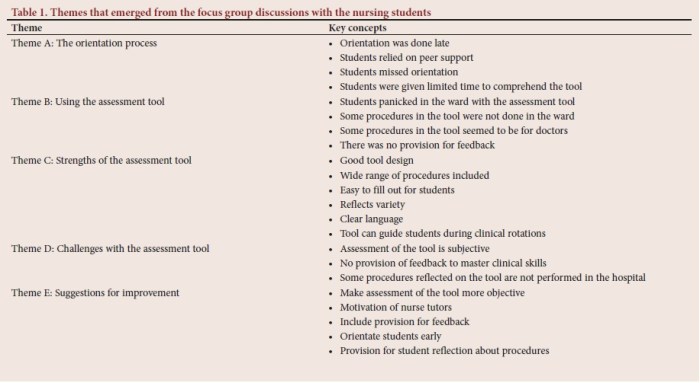Can nurses cut diabetic toenails – In the realm of healthcare, the management of diabetic foot ulcers presents a unique challenge, demanding meticulous attention to detail and a comprehensive approach to care. Nurses play a pivotal role in this endeavor, serving as guardians of foot health for diabetic patients, guiding them through the intricacies of prevention, assessment, and treatment.
This article delves into the multifaceted responsibilities of nurses in diabetic foot care, shedding light on their crucial role in safeguarding the well-being of these vulnerable individuals.
Nursing Care for Diabetic Patients

The management of diabetes requires a multidisciplinary approach, with nurses playing a vital role in providing comprehensive care to diabetic patients. Foot care is a critical aspect of diabetic patient management, as diabetes-related foot problems can lead to severe complications if not properly addressed.
Importance of Foot Care for Diabetic Patients
Diabetic patients are at an increased risk of developing foot problems due to factors such as neuropathy, peripheral artery disease, and impaired immune function. These factors can lead to the development of diabetic foot ulcers, which are a major cause of morbidity and mortality among diabetic patients.
Foot ulcers can become infected and lead to serious complications such as osteomyelitis, sepsis, and even amputation. Therefore, it is crucial for nurses to assess and monitor diabetic patients’ feet regularly to identify and address any potential problems promptly.
Diabetic Foot Ulcers and Their Complications
Diabetic foot ulcers are characterized by a break in the skin of the foot that extends into the underlying tissue. They can be classified based on their depth and the presence of infection:
- Grade 1:Superficial ulcer involving only the epidermis
- Grade 2:Ulcer extending into the dermis
- Grade 3:Ulcer involving subcutaneous tissue
- Grade 4:Ulcer involving muscle or bone
Infected foot ulcers are characterized by the presence of purulent drainage, erythema, and edema. Complications of diabetic foot ulcers include:
- Osteomyelitis (infection of the bone)
- Sepsis (a life-threatening infection)
- Amputation
Role of Nurses in Preventing and Managing Foot Problems in Diabetic Patients, Can nurses cut diabetic toenails
Nurses play a pivotal role in preventing and managing foot problems in diabetic patients. Their responsibilities include:
- Assessment:Regularly assessing patients’ feet for any changes in skin integrity, temperature, sensation, or pulses.
- Education:Providing patients with education on foot care, including proper footwear, nail care, and wound care.
- Prevention:Implementing preventive measures such as daily foot inspections, wearing appropriate footwear, and managing blood sugar levels.
- Wound care:Managing diabetic foot ulcers by cleaning and dressing wounds, administering antibiotics, and monitoring for infection.
- Collaboration:Collaborating with other healthcare professionals, such as podiatrists and wound care specialists, to provide comprehensive care.
By actively participating in foot care management, nurses can significantly reduce the risk of diabetic foot ulcers and their associated complications, improving the quality of life and overall health outcomes for diabetic patients.
Assessment of Diabetic Foot Ulcers
Diabetic foot ulcers are a common and serious complication of diabetes, affecting approximately 15% of diabetic patients. Proper assessment of diabetic foot ulcers is crucial for guiding treatment decisions and preventing complications such as infection, amputation, and even death.
Clinical Presentation
Diabetic foot ulcers typically present as open sores or wounds on the feet, most commonly on the plantar surface (bottom of the foot) or between the toes. They can vary in size, depth, and severity, and may be accompanied by pain, redness, swelling, or drainage.
Methods of Assessment
Assessment of diabetic foot ulcers involves a comprehensive examination that includes:
- Wound Size:Measured using a ruler or measuring tape to determine the length, width, and depth of the ulcer.
- Wound Depth:Classified using the Wagner-Meggitt Wound Classification System, which ranges from Grade 0 (superficial) to Grade 5 (deep, involving bone or joint).
- Infection:Assessed through clinical signs (e.g., redness, swelling, purulent drainage) and laboratory tests (e.g., wound culture).
Importance of Proper Assessment
Proper assessment of diabetic foot ulcers is essential for:
- Determining the severity and extent of the ulcer
- Identifying underlying causes and risk factors
- Guiding treatment decisions, such as wound care, antibiotics, or surgical intervention
- Monitoring wound healing progress and preventing complications
Treatment Options for Diabetic Foot Ulcers: Can Nurses Cut Diabetic Toenails

Diabetic foot ulcers (DFUs) are a common and serious complication of diabetes. They can lead to infection, amputation, and even death. The goal of treatment is to heal the ulcer and prevent it from recurring.
There are a number of different treatment options for DFUs, including:
- Debridement
- Dressings
- Antibiotics
- Offloading
- Revascularization
Debridement
Debridement is the removal of dead or infected tissue from the ulcer. This can be done surgically or with a sharp instrument. Debridement helps to create a clean wound bed that is more likely to heal.
Dressings
Dressings are used to protect the ulcer from further damage and to promote healing. There are a variety of different types of dressings available, each with its own specific purpose.
Antibiotics
Antibiotics are used to treat infections in the ulcer. They may be given orally or topically.
Offloading
Offloading is a technique used to reduce pressure on the ulcer. This can be done with crutches, a wheelchair, or a special shoe.
Revascularization
Revascularization is a surgical procedure that is used to improve blood flow to the ulcer. This can be done by creating a new artery or by widening an existing one.
Patient Education and Self-Care
Patient education and self-care are essential for managing DFUs. Patients need to be taught how to care for their ulcers, how to prevent infection, and how to manage their diabetes.
Prevention of Diabetic Foot Ulcers

Diabetic foot ulcers are a common and serious complication of diabetes. They can lead to infection, amputation, and even death. However, diabetic foot ulcers can be prevented by taking proper care of your feet.
Daily foot inspections are essential for preventing diabetic foot ulcers. Look for any cuts, blisters, or other injuries. If you find any, clean them immediately and cover them with a bandage. You should also check your feet for any changes in color or temperature.
If you notice any changes, see your doctor right away.
Proper footwear is also important for preventing diabetic foot ulcers. Wear shoes that fit well and provide good support. Avoid shoes that are too tight or too loose. You should also wear socks that are made of a soft, absorbent material.
Smoking cessation, weight management, and glycemic control can also help prevent diabetic foot ulcers. Smoking damages the blood vessels and nerves in your feet, which can lead to foot ulcers. Weight management can help reduce the pressure on your feet, which can also help prevent foot ulcers.
Glycemic control can help keep your blood sugar levels under control, which can help prevent damage to the blood vessels and nerves in your feet.
There are a number of foot care products and devices that can help prevent diabetic foot ulcers. These products include:
- Foot creams and lotions
- Foot orthotics
- Custom-made shoes
- Wound dressings
Talk to your doctor about which foot care products and devices are right for you.
Nursing Responsibilities in Diabetic Foot Care
Nurses play a pivotal role in diabetic foot care, encompassing assessment, treatment, and prevention of foot ulcers. Their expertise enables them to effectively manage this critical aspect of diabetic patient care.
Assessment: Nurses conduct comprehensive foot examinations, evaluating for signs of neuropathy, vascular insufficiency, and skin integrity. They meticulously assess pulses, sensation, and temperature, identifying potential risk factors for ulcer development.
Patient Education and Counseling
Patient education is paramount in diabetic foot care. Nurses provide detailed instructions on proper foot hygiene, nail care, and footwear selection. They emphasize the importance of daily foot inspections and prompt reporting of any changes or concerns. Counseling focuses on lifestyle modifications, including smoking cessation, weight management, and regular exercise, to mitigate risk factors.
Resources and Support Groups
Nurses connect diabetic patients and their families with valuable resources and support groups. These resources offer emotional support, access to specialized care, and educational materials. By fostering collaboration with other healthcare professionals, nurses ensure comprehensive and holistic care for diabetic patients.
FAQ Section
What is the significance of foot care for diabetic patients?
Diabetic foot ulcers are a common and potentially devastating complication of diabetes, leading to amputation in severe cases. Regular foot inspections and proper footwear can help prevent these ulcers from developing.
What are the clinical signs of a diabetic foot ulcer?
Diabetic foot ulcers typically present as open sores on the feet, often with surrounding redness, swelling, and drainage. They may be deep and extend into the underlying tissues.
How do nurses assess diabetic foot ulcers?
Nurses assess diabetic foot ulcers by examining their size, depth, and infection status. They also evaluate the surrounding skin and blood flow to the affected area.


